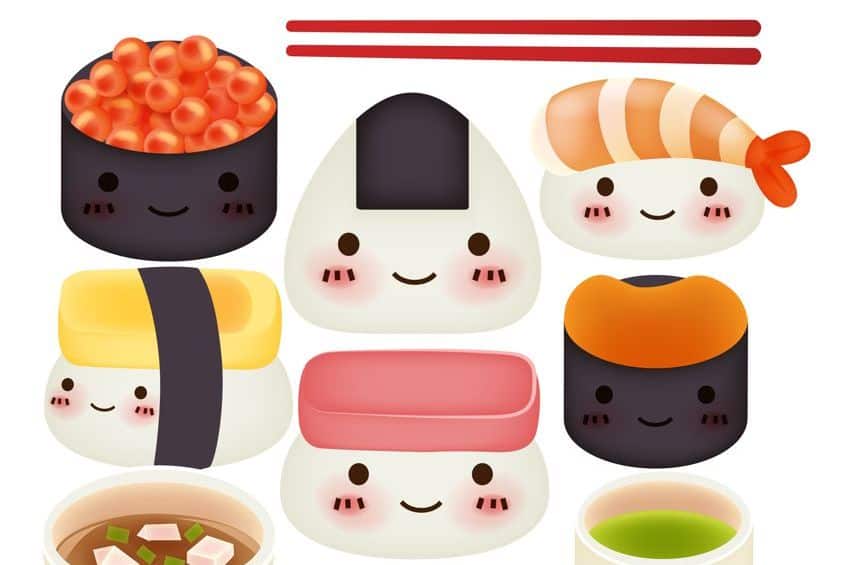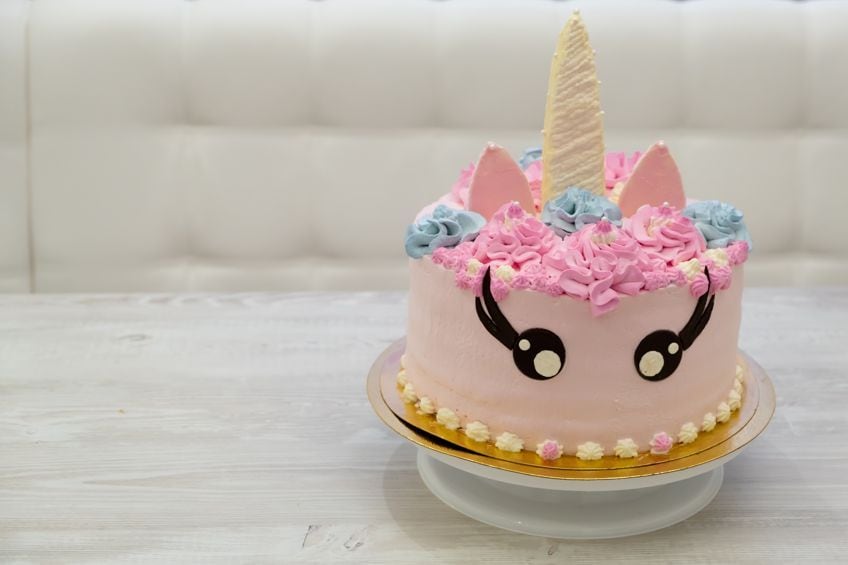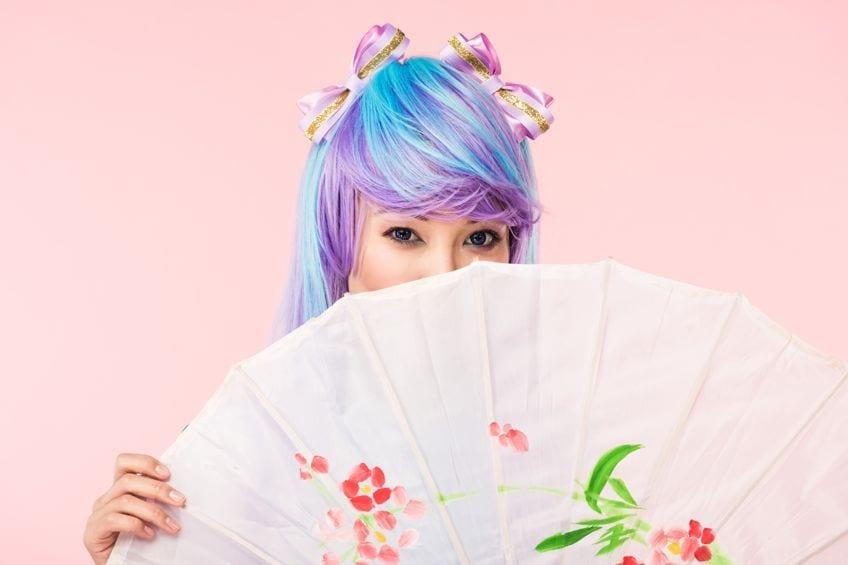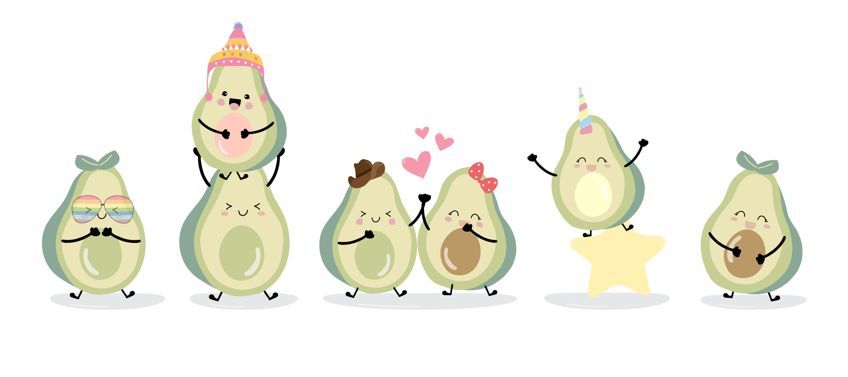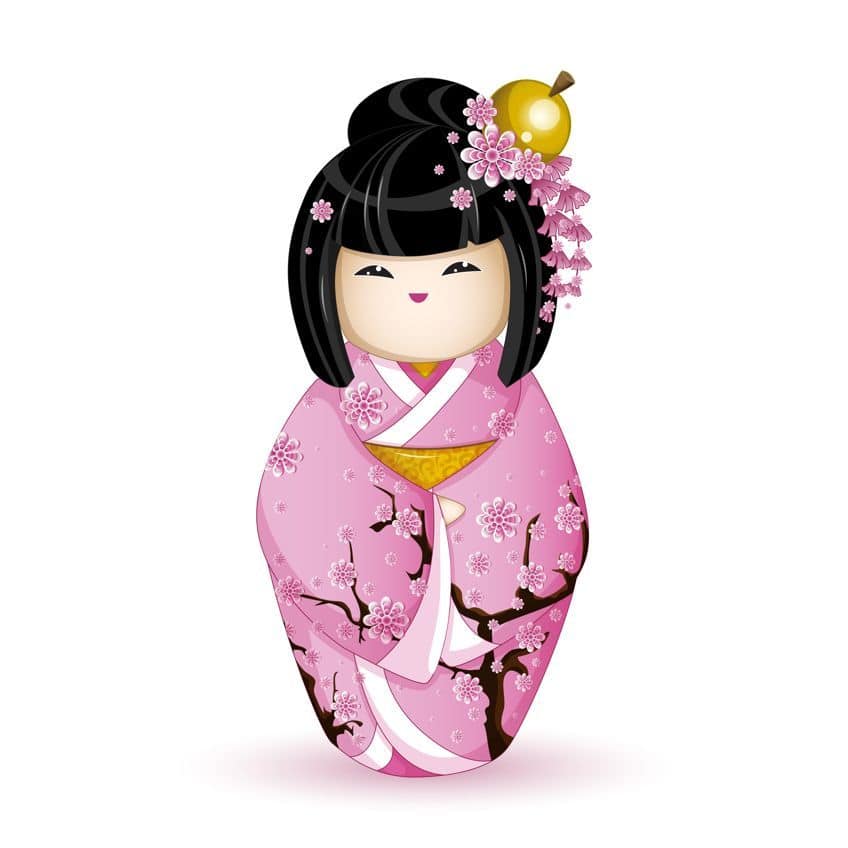What Is Kawaii? – The Japanese Culture of Cuteness
What is kawaii, what does kawaii mean, and what do critics have to say about kawaii culture? One of the best ways that Japan has used to connect its culture to the rest of the world was the concept of kawaii, better known as the embodiment of all things cute! Kawaii is known far and wide for its aesthetic and uniquely Japanese origin, embedded across popular culture and entertainment. In this article, we will dive into a critical exploration of the concept of kawaii, including its characteristics, origin, and variations in social opinion about kawaii as a culture. Read on for more about what makes kawaii, kawaii.
The Allure of Japanese Kawaii Culture
What is Kawaii, and what does kawaii mean? If you are an admirer of Japanese culture, then you will surely be aware of the concept of kawaii, which has become a fast-growing and rapidly-adopted trend in Contemporary culture. The phenomenon of kawaii originated with the Japanese phrase kao hayhushi, which translates to “one’s face is aglow” and refers to someone with a blushing face. The term “kawaii“, meaning “cute” has evolved to describe things and people that are also cute, adorable, and express a feeling of coy embarrassment.
Modern variations of kawaii also refer to the concept as anything so cute that it is also visually loveable. And hence, the culture of kawaii was born. Today, kawaii is recognized as both a culture and a visual language (and less preferred so, as an aesthetic). One might also wonder how an adjective has evolved to infiltrate Japanese popular culture and become one of the most-referenced words made about Japanese culture and its appeal to a non-Japanese audience.
When did Kawaii originate? The concept of kawaii was first used in reference to pitiable qualities, as described in a book written in the 11th century. The book, The Tale of Genji, was written by Lady Murasaki during the Shogunate era. The ideology behind the term kawaii was built on the perception that women were docile and animalistic, which was a perception formed under neo-Confucianism. Stemming from a description of a pitiful quality, kawaii was used to describe a stimulus or aspect of something or someone that aroused compassion, pity, and a sense of pity.
The visual expression of kawaii is associated with an expression of embarrassment, shyness, and innocent shame that is also admired and seen as “adorable”.
What Makes Something Kawaii?
What does kawaii mean? To unpack the kawaii meaning, one needs to assess what makes something kawaii. What is the language of cuteness? To be kawaii means to ultimately be cute and therefore, cuteness begins to form its own visual language. In a general sense, cuteness is subjective to each person, however, kawaii comes with a set of characteristics originating in Japan, that is considered uniquely cute in a Japanese sense. Contemporary notions of kawaii include physical attractiveness, which has become a measure that one would use to attract a partner. Studies found that individuals have begun to mimic kawaii attitudes and behaviors that are driven by a juvenilization of one’s character to fit the appeal of kawaii. The evolution of the kawaii meaning from an adjective to a visual language, a lifestyle, and a method of building attraction is complex. What makes something kawaii is determined by a few characteristics, which we will review below.

Unpacking the Characteristics of Kawaii
The characteristics of kawaii depend on the question “What makes someone or something kawaii?”. In the history of kawaii, the defining characteristic of the concept is built around an air of innocence, cuteness, and anything with small, round, and essentialized features. Kawaii is also characterized by toys and products associated with youth, expression, childhood, and stylized imagery, which was prevalent in the late 20th century.
In 1984, it was found that kawaii had also infiltrated writing styles in teenagers, who formed a new style as part of an underground movement that focused on producing “round writing”, also recognized in comics as manga ji and burikko ji.
The characteristics of kawaii can therefore be summarized as a set of mannerisms, visual languages, and cultural developments that encompass the concept. A general summary of the visual elements of kawaii includes visual cues that are considered cute, a sense of innocence or childlike qualities, playfulness, the use of bright or pastel colors, round features, soft shapes, the presence of cute animal characters, an emphasis on the small proportion or size of something, expressions of joy, aloofness, or happiness, and exaggerated features such as plump cheeks and large eyes.
Kawaii in Contemporary Culture
Kawaii is a concept that has infiltrated fashion, food, and merchandise. In fashion, kawaii visual languages and elements have been incorporated in Japan as part of street styles found in the Harajuku district and are used by many as a form of personal expression. Kawaii visual elements are used when mixing and matching different colors and patterns on accessories to create Kawaii items. Kawaii clothing and accessories also feature playful designs with pastel colors and can include characters from anime and manga. Kawaii fashion items include skirts, t-shirts, dresses, and cute accessories such as ribbons and bows.
Kawaii art styles have evolved in the divisions of illustration and the fine arts through character design. Kawaii art styles have seen a development from simplistic designs to more complex designs with diverse expressions. Early kawaii art styles were inspired by characters from manga and anime and over time, artists explored different techniques to produce their own kawaii visual languages ranging from minimalist Chibi-styled artwork to intricate illustrations. Artists have adapted to the influences of kawaii culture in Contemporary art and have experimented with new color palettes and subjects to capture the essence of cuteness, which defines kawaii itself.
Cosplay is another Contemporary cultural practice that incorporates kawaii culture in fashion where people draw from characters seen in manga, video games, movies, and anime and recreate the character’s visual appearance. Cosplay is also elevated when the individual mimics the character’s mannerisms and embodies the character for a realistic look and feel. Doll-like characters are also mimicked to evoke a sense of kawaii and this can be seen in Lolita fashion, which was built on a fusion of the Rococo style and elements of Victorian fashion and Gothic dressing to portray a character of innocence, beauty, and idealized cuteness. Adopting kawaii in fashion is also a marketing strategy to promote kawaii “aesthetics” that appeal to the younger demographic and sell for their lightheartedness.
Elements of kawaii can therefore also be found in packaging, advertising, and logo designs.
The kawaii concept has also evolved beyond fashion and into the realm of food where it is used to describe dishes that are cute and visually appealing. Kawaii is embodied in food through animal-themed desserts and character-shaped items such as bento boxes, which enhance the experience of eating and make eating a fun activity. In adding a sense of kawaii to food, people can also experience a sense of joy and whimsy, which becomes a part of a culinary presentation. Other examples of kawaii foods in Japan include cute character snacks that are packaged in visually appealing packaging and anime themes, latte art in the form of colored milk foam that is used to create intricate designs, and animal-shaped sweets and cookies that appeal to the inner child of all.
The kawaii concept is also utilized extensively in merchandise via character goods such as Sanrio plushies in the form of Hello Kitty, My Melody, and Cinnamoroll. You will also recognize the character Pikachu from Pokémon, which is among one of the most globally-recognized Japanese characters. Other merchandise that adopts the kawaii appeal includes stationery, home décor, bags, phone cases, key chains, miniature figurines, and even personal care items.
Kawaii in Japanese Society
The concept of kawaii is deeply embedded in Japanese society and has become a cultural phenomenon that has infiltrated fashion, design, advertising, merchandise, and even food. The essence of kawaii can be seen in Japanese society as more than just a clever marketing tactic. Kawaii leveraged its core value of cuteness to incite joy and positivity. One might even argue that the popularity of kawaii can be attributed to a form of social escapism following the somber mood of World War II, which saw Japan experience a rapid change in economic growth and society. The playfulness of kawaii was thus appealing to many since it offered a ray of light and innocence in a world of chaos and rapid change.
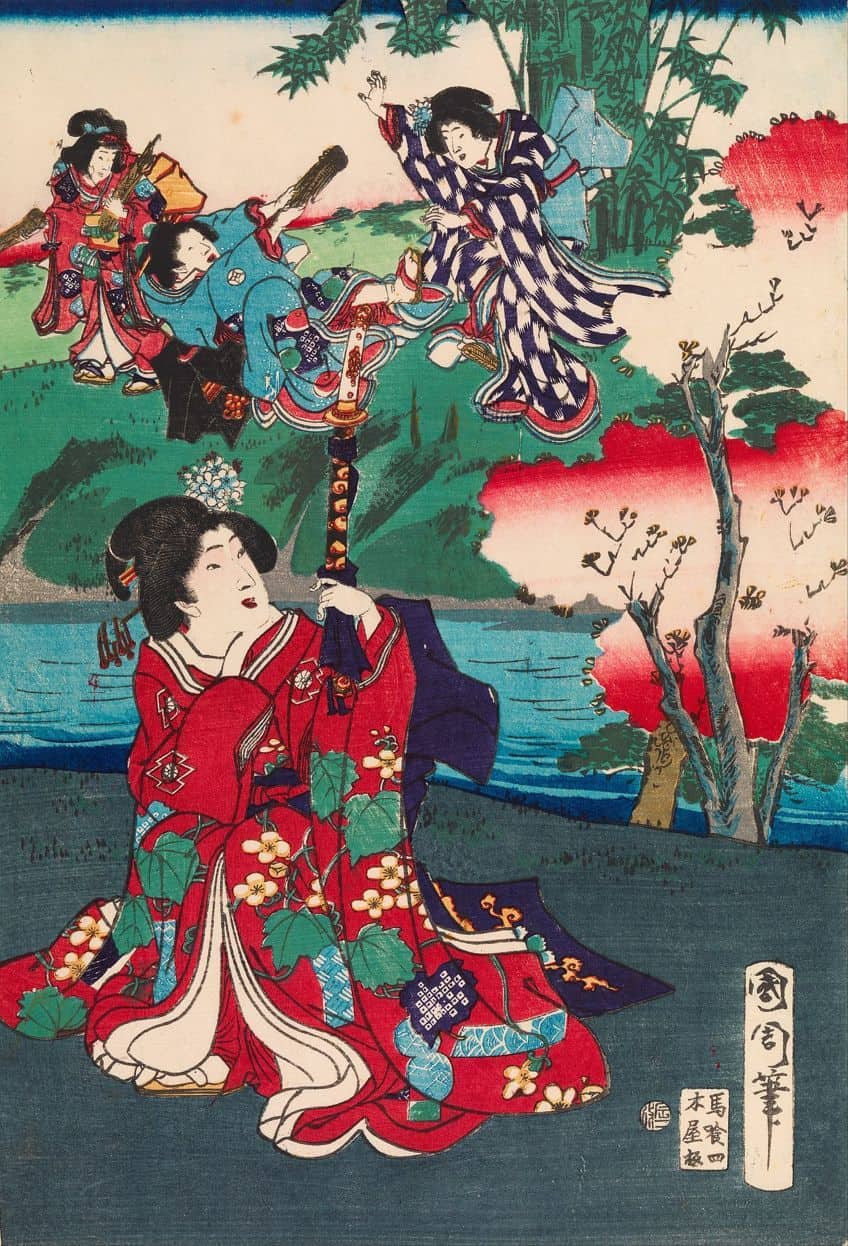
Kawaii culture also coincides with the growth in popularity of anime and manga, which promoted characters like Hello Kitty throughout the 1970s and well into the 21st century. Cute characters from Japanese popular culture became iconic symbols of kawaii culture and have been featured in magazines, television, merchandise, and advertisements across the world. The concept of kawaii also surpasses gender and age boundaries, which makes it one of the most powerful concepts to infiltrate society. Kawaii culture can be used as a form of escapism while enabling those who embrace it to find comfort in cuteness and heal their inner child. The fascination with kawaii culture has also gained global popularity and has been adopted in many international subcultures. Whether it is a part of one’s daily fashion choice, a lifestyle, or a method of communication, kawaii culture is certainly one of the most fascinating and widely-adopted concepts.
Kawaii and Popular Culture
How does kawaii feature in popular culture? Anime and manga have proved incredibly powerful in the popularization of kawaii culture and the idea of cuteness itself is encapsulated by small animal characters and whimsical, playful figures woven into numerous intriguing and humorous anime and manga stories. The concept of kawaii is integrated strongly into anime and manga through storytelling, character design, and the overall visual language used to convey the character. Characters in anime and manga embody the concept of kawaii through their visual appearance, mannerisms, and behavior. This translates visually to the use of exaggerated features, expressive eyes and gestures, vibrant and colorful designs, and any element used to convey a sense of innocence or charm to the character.
The storytelling around the character is also crafted around creating a kawaii appearance and includes lighthearted themes such as love, friendship, and other wholesome, heartwarming themes that appeal to audiences of all ages.
Similar to anime and manga, video games also incorporate the concept of kawaii into the concept of the character through gameplay mechanics, environments, and characters with kawaii fashion. Video games also include kawaii-inspired sound effects, which immerses one into the character and narrative behind the game. Aspects of kawaii culture can also be found in music, which uses the genre of cuteness in catchy sounds, energetic performances, and playful lyrics to gain attention from kawaii-loving fans. Kawaii music is generally upbeat and features genres such as J-pop and anime themes.
Kawaii Around the World
The kawaii concept has gained international recognition and has been embraced by many from diverse cultural backgrounds. Kawaii has influenced multiple industries, including entertainment, design, and fashion, which reflect the reach and universal appeal of the concept. Kawaii culture has also enabled many to embrace their uniqueness and challenge existing norms around Western standards of beauty. It is known that kawaii has become a personal lifestyle choice for many individuals, who incorporate elements of kawaii in their personal belongings, home décor, and as a way to create an uplifting environment.
Along with the rise in internet subcultures and social media, kawaii culture has embraced the digital world and has seen many adopt the aesthetic and lifestyle of kawaii across personal projects, cosplay, and fashion to inspire a sense of community. Finally, kawaii’s international reach is also intriguing to study since its clever appeal of innocence, child-like joy, and happiness attract many, young and old, to embrace a familiar feeling that many crave, thus relieving the pressure of daily life.
Critiquing Kawaii Culture
“An exoticism of the East”, “Hello Kitty has no mouth”, and “cute culture is capitalism disguised and repackaged in glitter”. As with any trending concept or lifestyle constructed by society and dominating the fields of popular culture and advertising, it is crucial to keep abreast of the criticisms of the concept and all that it stands for in the greater picture.
Below, we have summarized the critiques against kawaii culture as well as some of the responses to the criticism of the concept that will give you a full picture of how kawaii has been received across the globe.
Criticism Against Kawaii Culture
As previously mentioned, kawaii is also used as a form of escapism, which has become one of the points of critique against the culture and the reasons why one might cross the borders of “toxic positivity” while promoting a double standard of unrealistic beauty through the concept of kawaii itself. If one examines the essential foundation of kawaii, it can be deduced that one needs to become “cute” to receive attention for certain personal interests and therefore be “loved” by a society that embraces a set standard or visual language. Generally celebrated for its “cute” aesthetics, kawaii culture is also criticized for being superficial in terms of prioritizing cuteness over true individuality or flaws that make one human.

Critics also argue against kawaii culture due to its inherent emphasis on child-like visuals, which is said to promote the infantilization of adults, which in turn inhibits their personal growth and affects their maturity. One might also narrow in on the diverse adoption of kawaii culture by examining its use of “cuteness” and “innocence” to promote traditional gender roles involving women, who are meant to embody idealized qualities of submission. This can be viewed as a form of reinforcing gender stereotypes; however, it is up to the individual and their preferences to determine what kind of role they would like to adopt.
One of the primary criticisms against kawaii culture is its tendency towards excessive commercialization where one might be encouraged to fall into mindless consumerism motivated by their lifestyle preferences and drive to purchase a character-inspired product. Among the strongest arguments against kawaii culture is its capacity to enable instances of cultural appropriation, where international followers may remove kawaii out of context and capitalize on its visual language without a thorough understanding or respect for the concept’s cultural significance.
Kawaii culture has also been critiqued for its potential to enable vulnerable individuals to pursue escapism and promote reality avoidance, which prevents individuals from engaging in events and personal issues that impact their lives.
Responses to Criticisms of Kawaii Culture
In Japan, cute culture has encouraged the growth of communities where people feel loved, appreciated, and accepted for their contribution to different aspects of kawaii culture. Responses to the criticisms against kawaii culture include that despite its tendency to promote escapism, the culture also enables those who embrace it, to fully express their unique preferences using “cute” visual language to develop a personal style and identity.
The double-edged sword of kawaii culture and gender role stereotypes also argues that kawaii culture can be leveraged as a form of women empowerment to promote the artistic talents and skills of women who have not been able to assert their creative agency. On a global basis, kawaii culture has also exposed many people to the culture of Japan, which has also been used as a tool for bonding and fostering connection.
A shared appreciation for cuteness and kawaii culture has an uplifting effect on those who seek it and has also had a tremendous economic impact on Japan and the world through cultural exchange, tourism, entertainment, and merchandise. Regarding mental health, kawaii culture is generally associated with a cheerful outlook on life, which can be comforting and relaxing to those who are burdened by the stresses of life. As with any philosophy or lifestyle, one should always proceed with caution, so as not to become obsessed or overly engulfed in maintaining the lifestyle that one misses out on the important realities of the day.
Kawaii culture is incredibly fascinating in its appeal and reaches beyond Japan. One would not expect to see a lifestyle and culture emerge from an adjective, as one might encounter in kawaii. We hope that you have enjoyed learning more about the complex world of kawaii and its place in Contemporary society.
Frequently Asked Questions
What Is Kawaii Culture?
In Japan, cute culture is known as kawaii culture and describes the culture defined by cute aesthetics. Kawaii culture encompasses fashion, music, popular culture, food, and merchandise, among many other aspects of Japanese culture.
What Makes Something Kawaii?
In Japanese culture, kawaii refers to any object, animal, or person that is perceived as being lovable, innocent-looking, and non-threatening. Depending on the context, anything can be described as kawaii as long as it is tiny, lovable, or brings happiness.
Are There Artists Who Make Kawaii Art?
Many artists and illustrators across the globe produce kawaii art. These include artists and illustrators such as Rune Naito, Yoshitomo Nara, Takashi Murakami, STIK, and KAWS.
Liam Davis is an experienced art historian with demonstrated experience in the industry. After graduating from the Academy of Art History with a bachelor’s degree, Liam worked for many years as a copywriter for various art magazines and online art galleries. He also worked as an art curator for an art gallery in Illinois before working now as editor-in-chief for artfilemagazine.com. Liam’s passion is, aside from sculptures from the Roman and Greek periods, cave paintings, and neolithic art.
Learn more about Liam Davis and about us.
Cite this Article
Liam, Davis, “What Is Kawaii? – The Japanese Culture of Cuteness.” artfilemagazine – Your Online Art Source. September 26, 2023. URL: https://artfilemagazine.com/what-is-kawaii/
Davis, L. (2023, 26 September). What Is Kawaii? – The Japanese Culture of Cuteness. artfilemagazine – Your Online Art Source. https://artfilemagazine.com/what-is-kawaii/
Davis, Liam. “What Is Kawaii? – The Japanese Culture of Cuteness.” artfilemagazine – Your Online Art Source, September 26, 2023. https://artfilemagazine.com/what-is-kawaii/.


